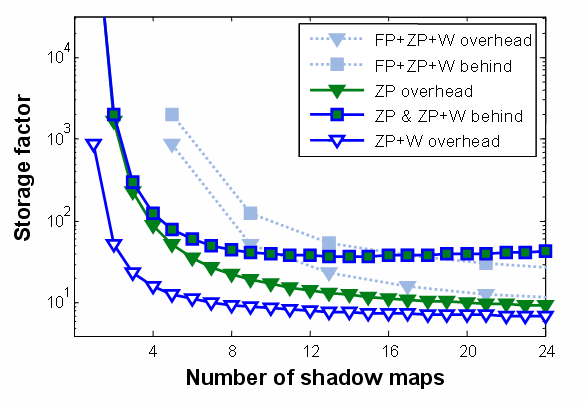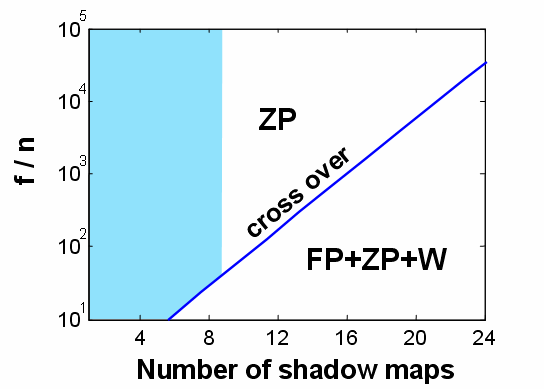
When we compute the storage factor in the paper for the light behind the viewer, we ignore the near plane. This makes little difference when the depth ratio (f/n) is large. But after repeated z-partitioning, the depth ratio becomes much smaller and the near plane becomes significant. Figure 12 in the paper should actually look like this:

Note that for the light behind the viewer, the storage factor for z-partitioning with and without warping (ZP and ZP+W) initially decreases, but then begins to slowly grow. This is due to the fact that from this light direction there is significant overlap between the shadow maps.
There is a point at which face partitioning (FP+ZP+W) actually becomes better than z-partitioning. This figure shows where that crossover occurs for varying parameters:

Each region is labelled with the lowest error algorithm. Since we are looking for an algorithm that performs well at high depth ranges with just a few shadow maps, our recommendation to use z-partitioning with warping (ZP+W) does not change.